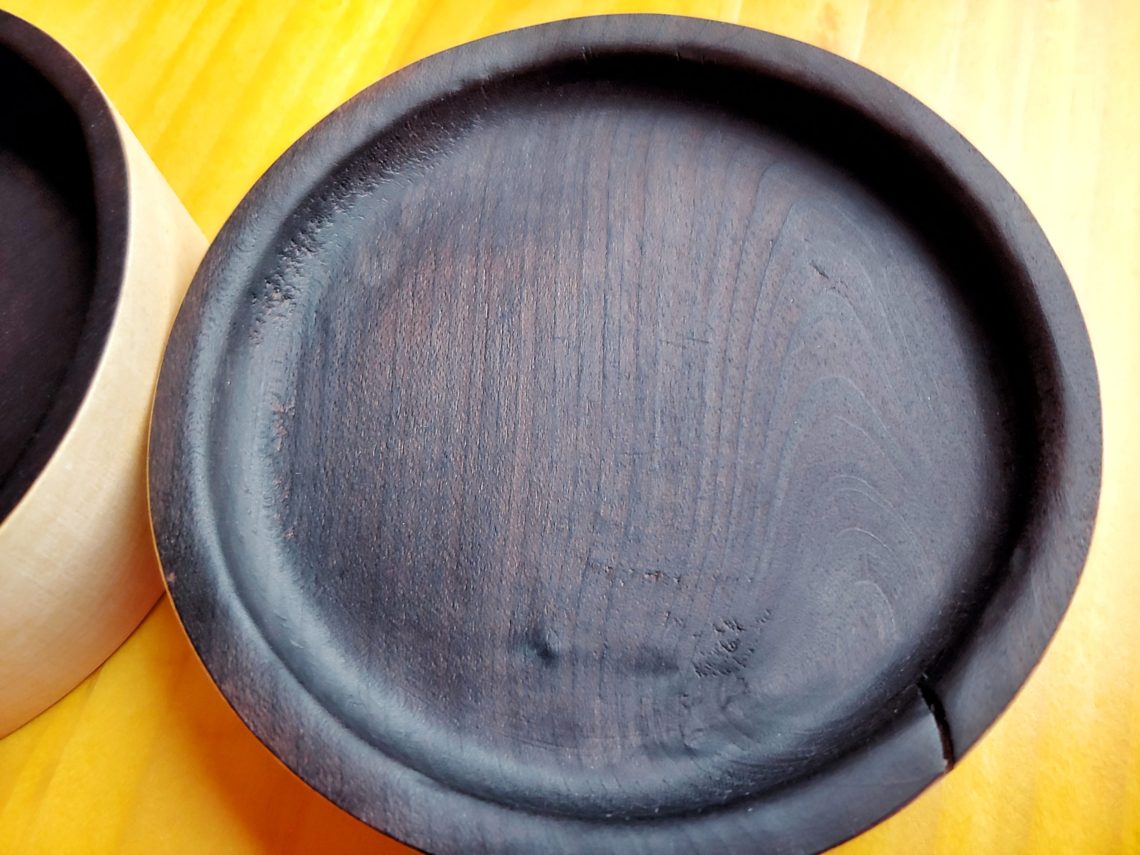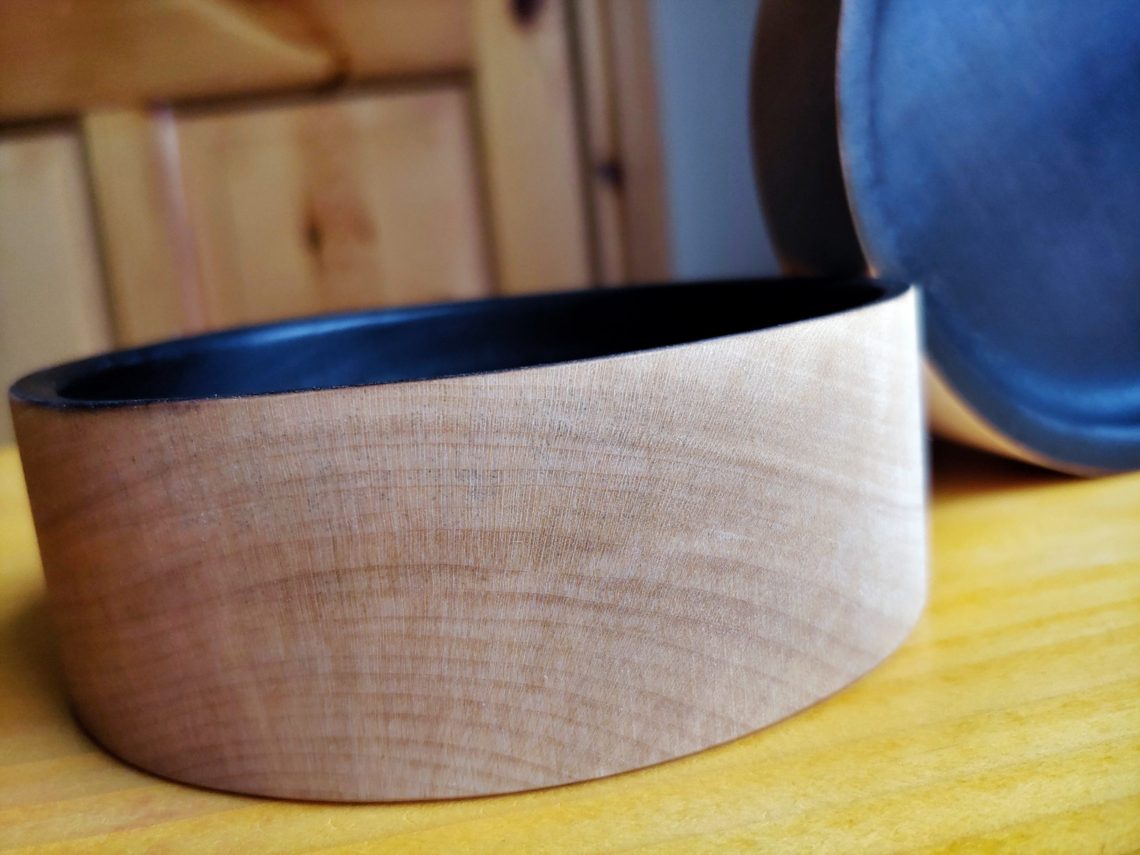
Sycamore coasters
That sycamore (maple) tree was cut in late 2018. I saved a couple of logs, split in half with an axe on a site. I’ve never considered milling them into boards just because they’re so irregular, and I’d need a jig, or a fixture, to cut them with a bandsaw. They seemed to be perfect for small projects using block-shaped wood, single-part projects, art etc. Just like coasters. Yes, another set of coasters, with no holes in the bottom for a change (see “3 button coasters”). They should be great for drinks, hot and cold, but also for large candles or just for storing anything else. I got myself a brand-new handsaw, especially for this project. Cheaper and faster than building a jig and bringing it over to an industrial bandsaw, I thought… I wasn’t exactly right. It could be cheaper, but not faster.
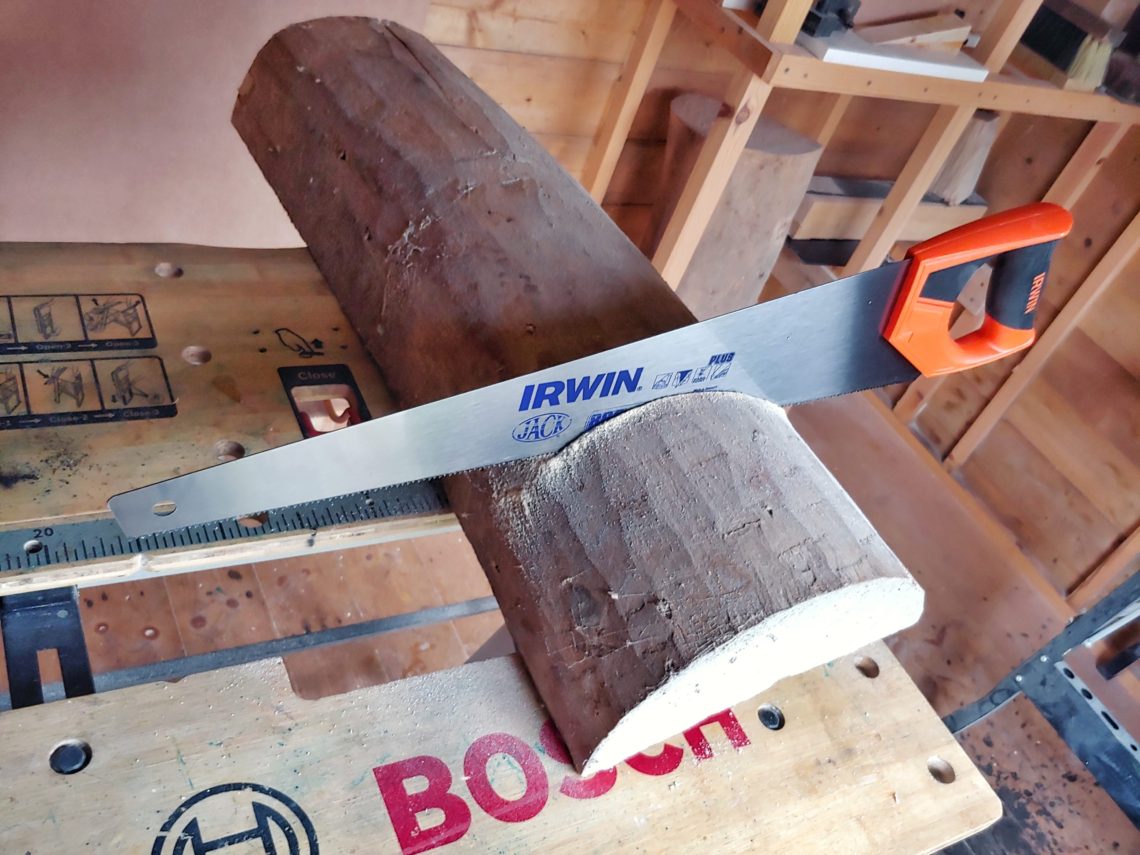
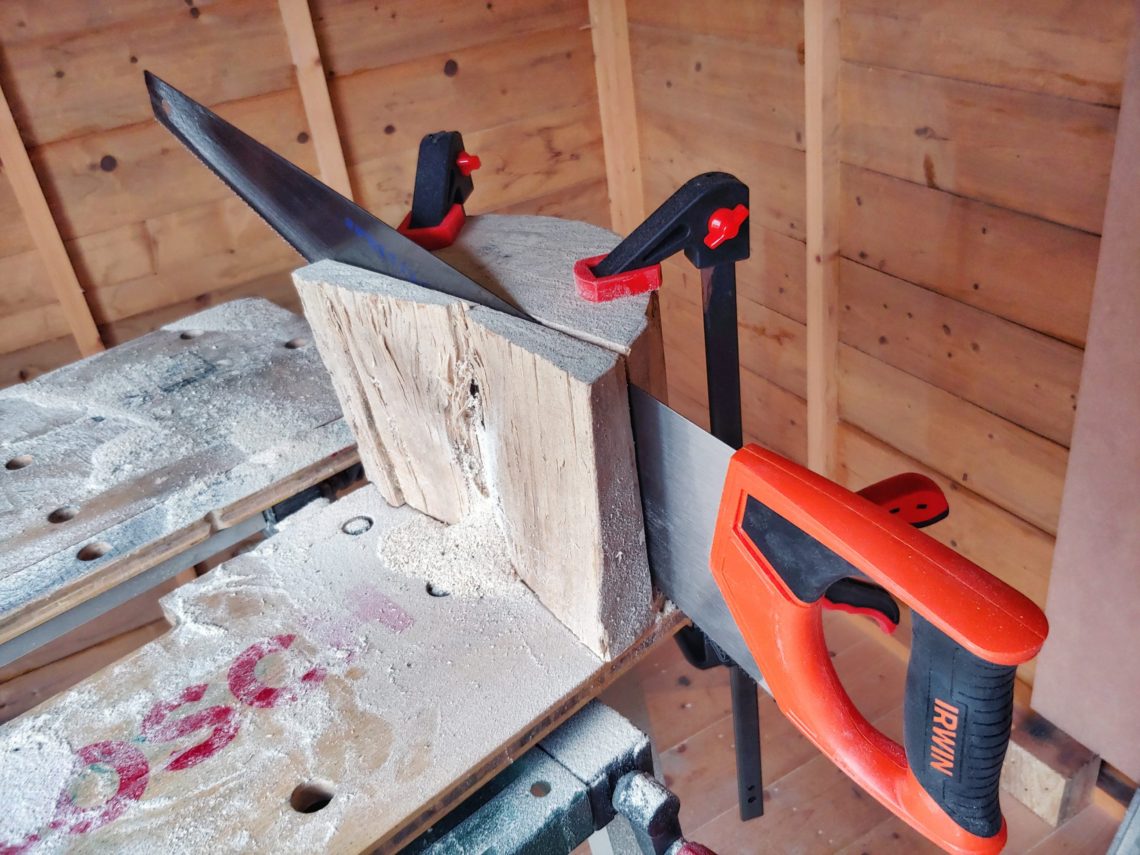
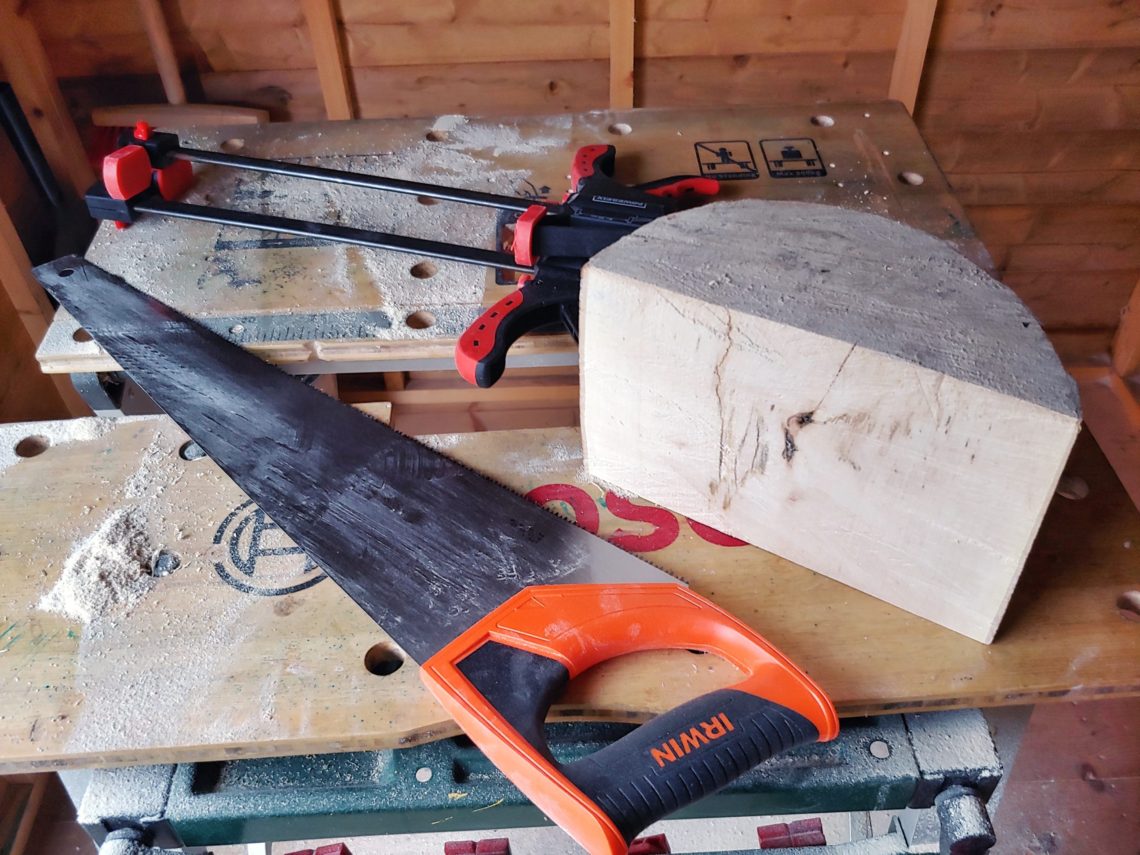
It took me 1 hour for each cut! Very exhausting. I was very pleased with the boards/pieces though! Consistent and relatively flat. My technique was good. Due to the cracks in the wider board, I decided to use it for only 1 coaster and make another one, thicker, using the off-cut. But first, they needed to be flattened with my router jig.


Beautiful! It didn’t take long. They were ready for routing out the recesses. The same template was used last time, I simply clamped the workpieces with fence clamps and started the job. It wasn’t planned, but I realised that the thicker board could get a deeper recess while the thin board a shallow one. As expected, the surface inside the recesses was quite rough. That might be caused by a dull router bit blade, wood moisture content or other factors. It happens very often, and it’s extremely hard to sand it smooth. That’s why I didn’t even try.
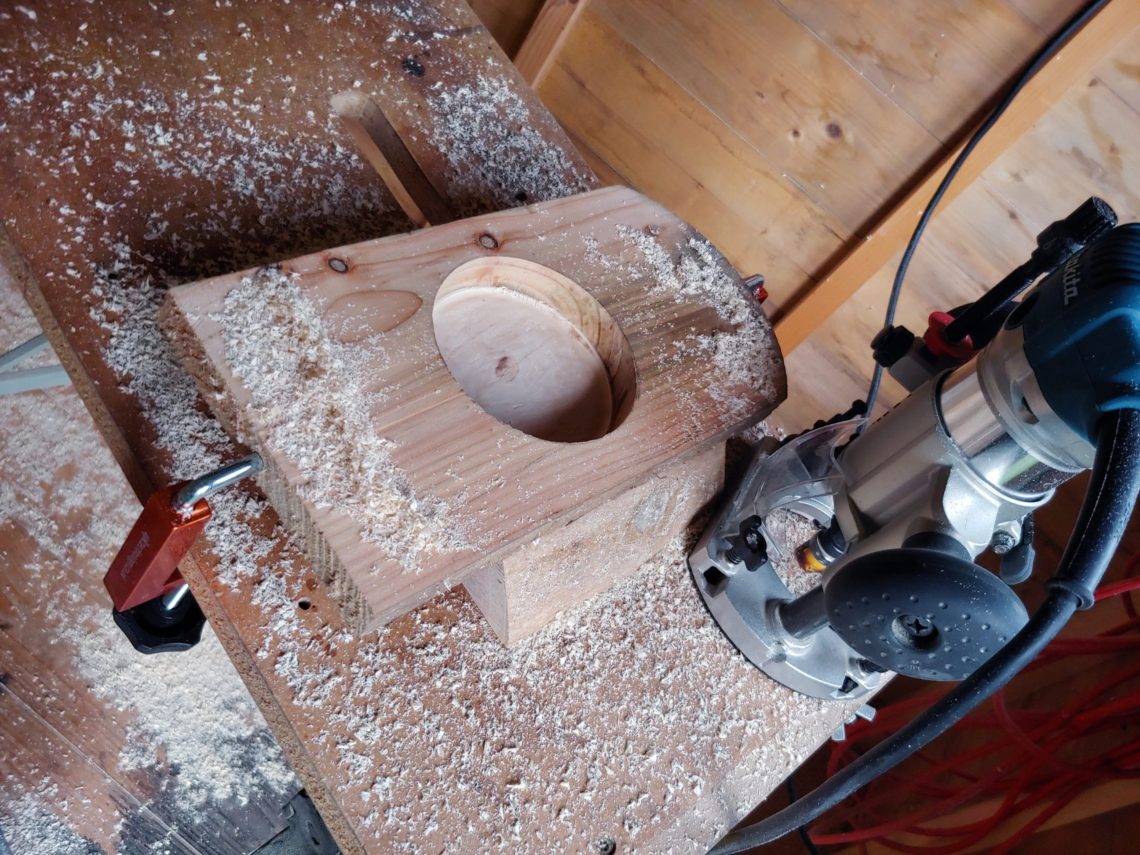
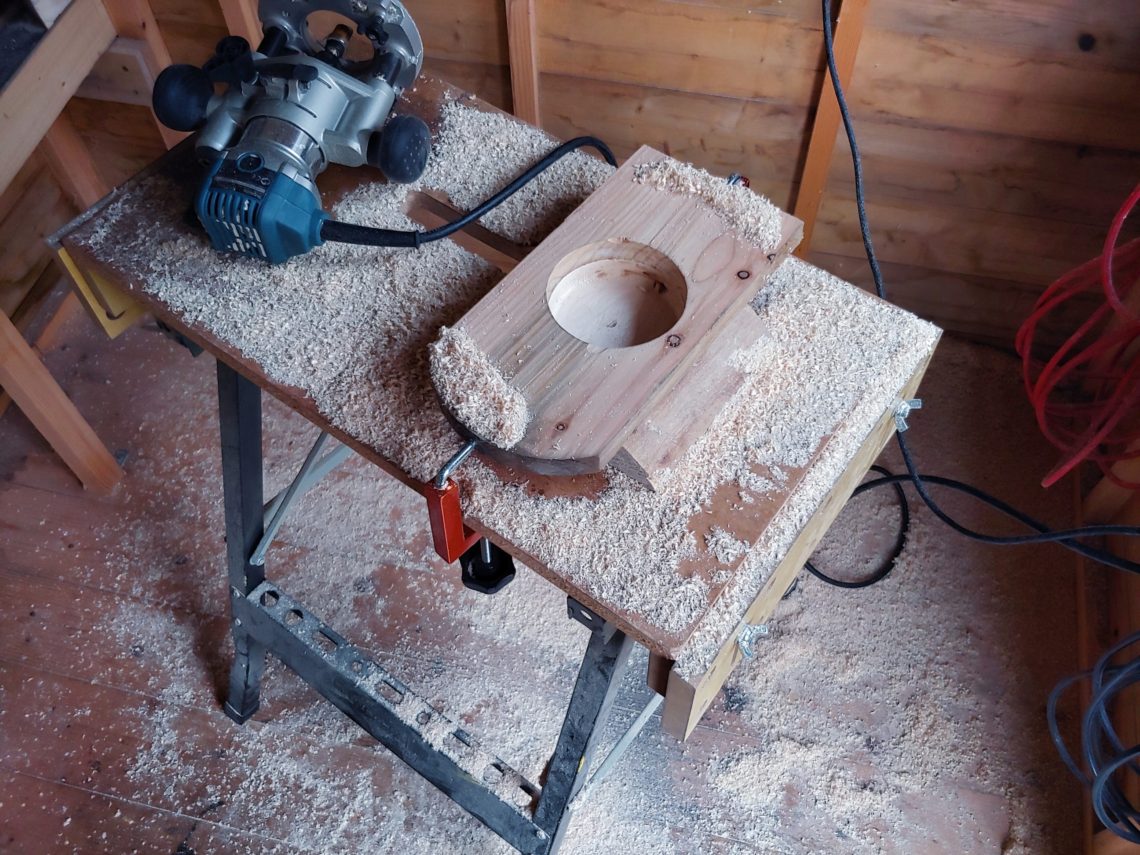

Using my bandsaw I cut the circles out and charred the wood. I used a very small (short) blowtorch flame pointed to the “corners”. That allowed me to evenly burn the wood, then I increased the flame and finished the rest. I removed some charred surfaces with fine steel wool. Then using the same wool I did wet sanding. I used teak oil as a lubricant. That could be also called the 1st coat. The 2nd coat was applied with a cloth that left the inside sealed, stabilised and dust-free.


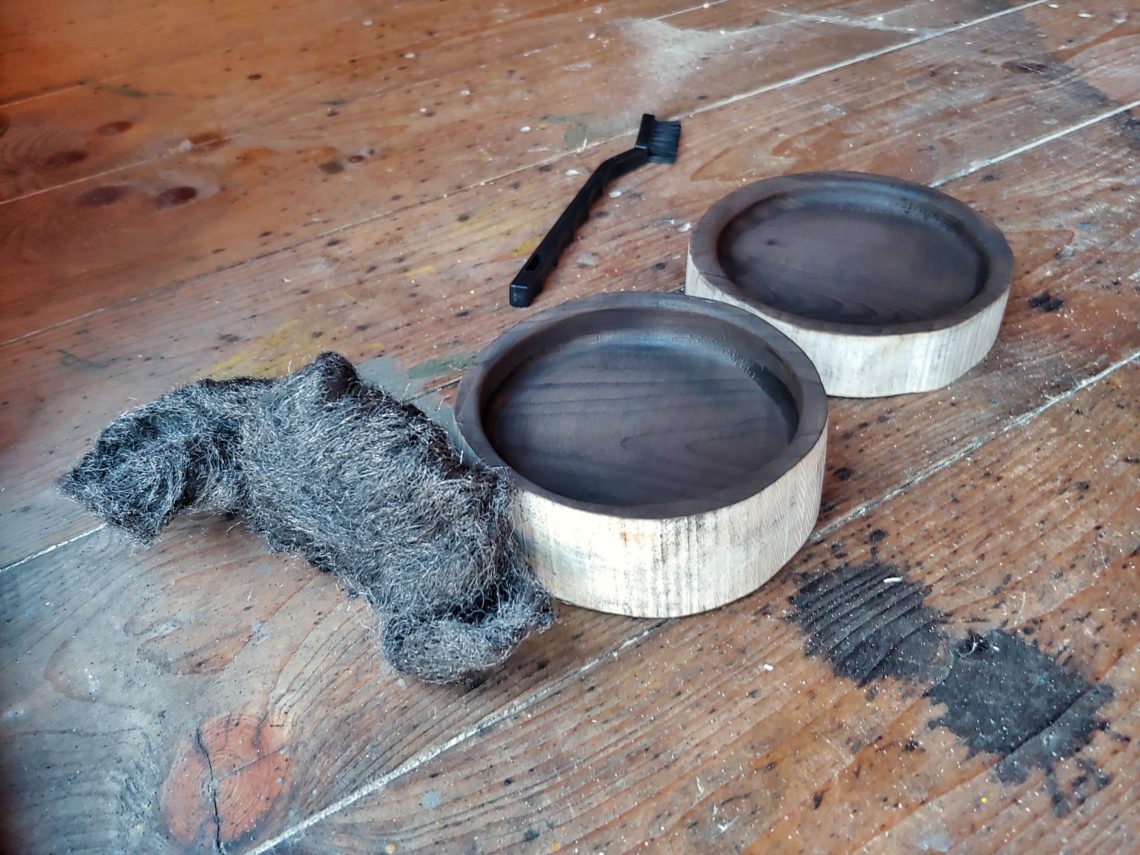
Next, I sanded the outside using my belt sander. I fixed it to the bench and built a simple sanding rest, which worked just like a tilting arm (a table) used in vertical sanders. I double made sure at all times that the sanded walls were square to the base. The bottoms were sanded over that belt sander as well. It didn’t seem to be a good choice to use an orbital sander for that job as the bottoms were the same shape but slightly smaller than the sanding disc.
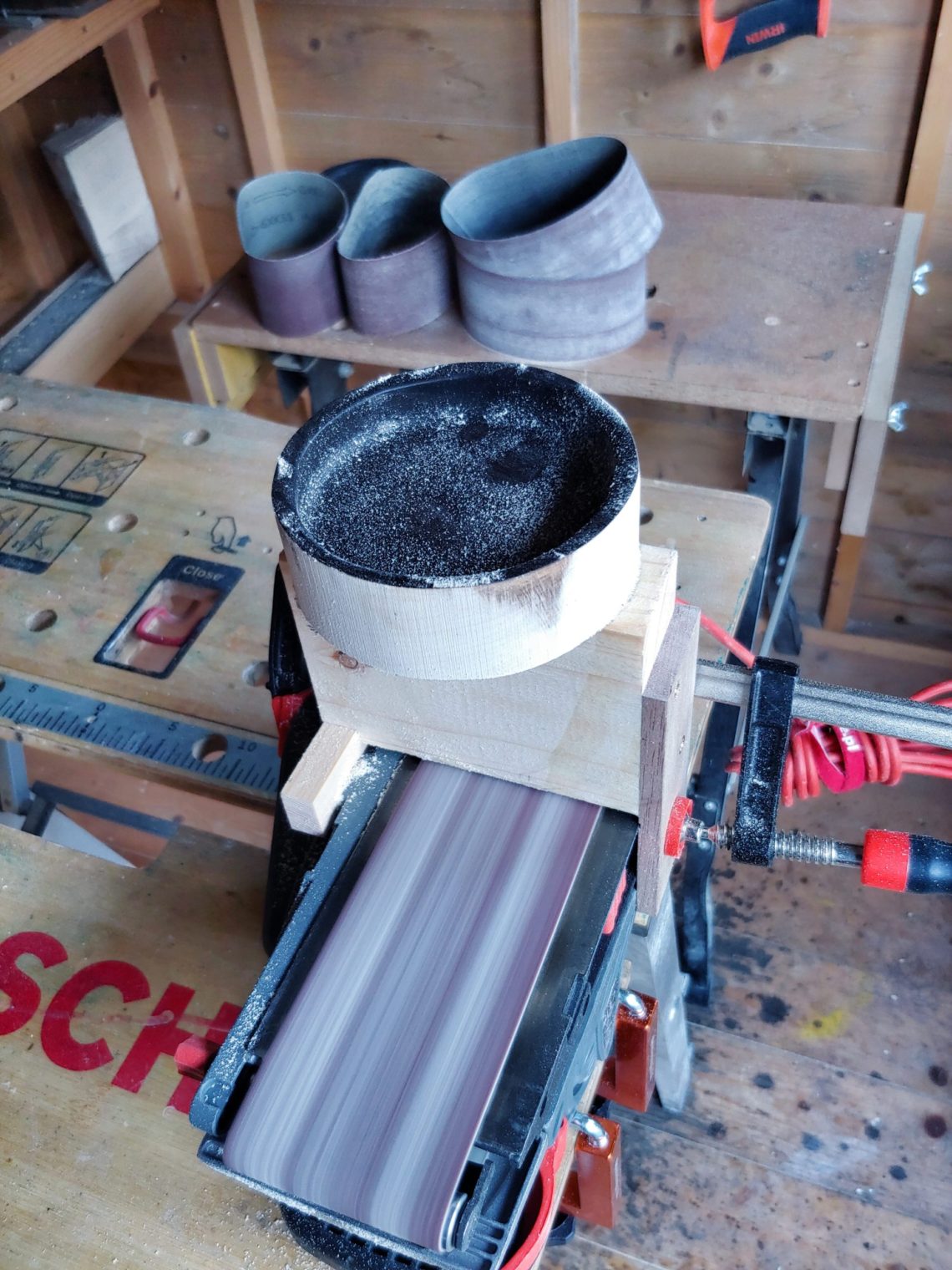



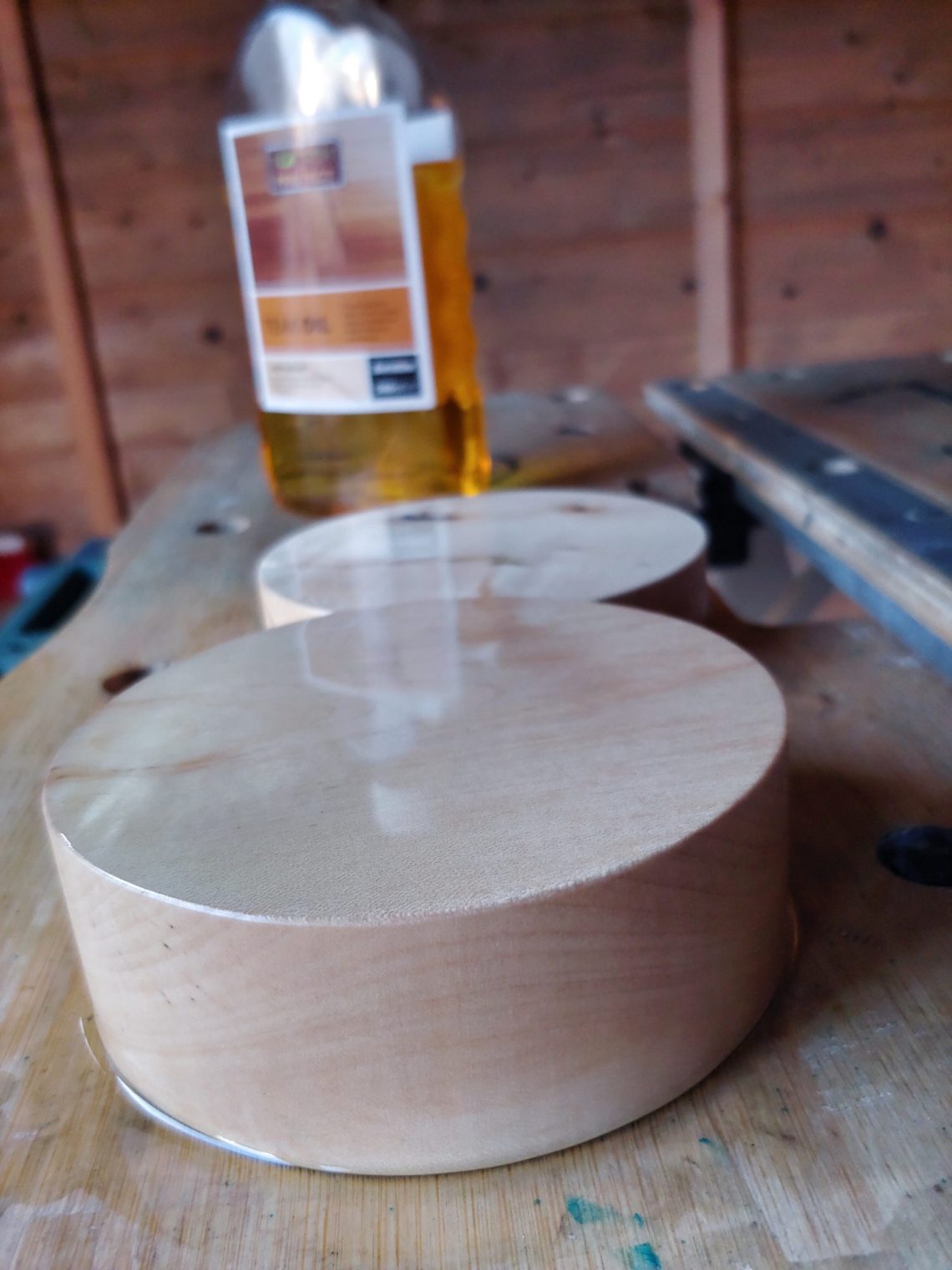
Before I applied a heavy coat of teak oil, I did some light hand sanding, eased the edges etc. They needed a couple more coats which took me a few more days. But finally, the oil dried and that beautiful set of 2 coasters was ready to go. I’m very happy with the way they came out, super smooth, nice to the touch, draw eyes, lovely colours and straightforwardly designed.

